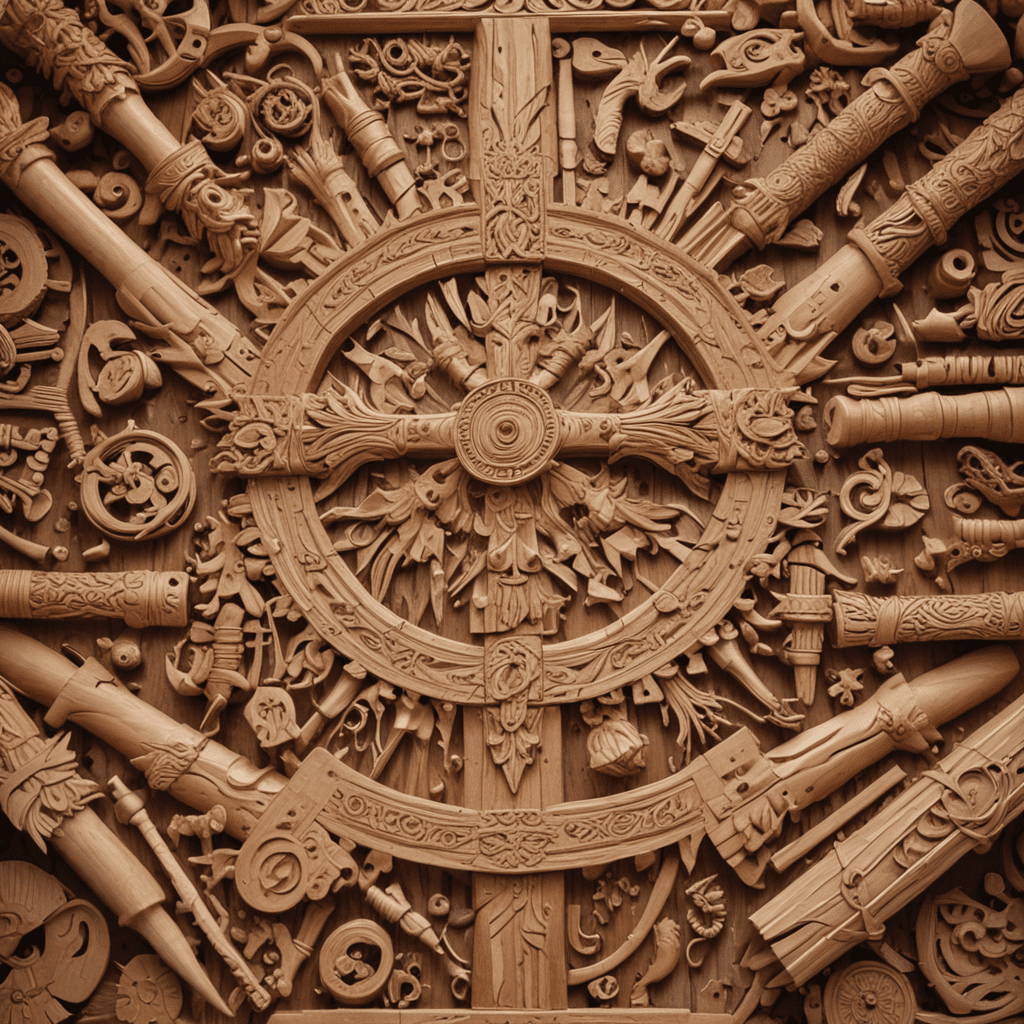Slavic Mythology: The Art of Woodworking and Carpentry
I. Introduction
Woodworking and carpentry have always been held in high esteem in Slavic culture. Trees were revered as sacred entities, each with its own spirit, and the ability to work with wood was seen as a gift from the gods. This profound respect for wood is reflected in the numerous deities associated with these crafts, as well as the intricate symbolism embedded within the choice of wood for different purposes.
II. The Role of Wood in Slavic Mythology
In Slavic mythology, trees were not mere plants but sentient beings imbued with spirits known as Leshies. Each type of tree possessed unique powers and associations: the oak symbolized strength and longevity, the birch represented purity and rebirth, and the willow was connected to sorrow and the afterlife. This deep connection between trees and the divine realm made wood an essential material for constructing sacred structures, such as temples and shrines.
III. Deities Associated with Woodworking
The Slavic pantheon included several deities closely associated with woodworking and carpentry. Leshy, the forest spirit, was believed to protect and guide craftsmen while they worked in the woods. Ded Moroz, the winter deity, was often depicted as a skilled woodworker who crafted magical toys and gifts for children. These deities not only provided inspiration and protection to artisans but also served as symbols of the sacredness of their craft.
IV. Tools and Techniques in Slavic Woodworking
Slavic woodworkers employed a range of traditional tools, including axes, adzes, chisels, and bow saws. They developed ingenious carving techniques, joinery methods, and assembly techniques that allowed them to create complex and durable structures. The use of dovetail joints, for example, ensured the strength and longevity of buildings and furniture.
V. Architectural Structures and Carvings
Slavic woodworking skills were showcased in the construction of impressive architectural structures, including houses, churches, and other buildings. The intricate carvings on rooflines, windows, and doors were not merely decorative but also held symbolic meanings. These carvings often depicted protective symbols, such as the thunderbird or the horse, and were believed to ward off evil spirits and bring good fortune to the occupants.
VI. Household Objects and Utensils
The skills of Slavic woodworkers extended beyond architectural feats. They also crafted a wide range of household objects and utensils, from furniture and cookware to agricultural implements. Each item was imbued with a unique aesthetic and practical design, often featuring symbolic motifs and intricate carvings. These objects not only served their intended purpose but also carried cultural significance, reflecting the lifestyle and values of the Slavic people.
VII. Ritual Objects and Amulets
In addition to everyday items, Slavic woodworkers also created ritual objects and amulets. Totemic poles, carved with representations of animals, plants, and mythological creatures, served as protective symbols for the community. Smaller carved talismans, worn as pendants or carried in pockets, were believed to bring good fortune, ward off evil spirits, and heal the sick. These objects played a vital role in Slavic religious practices and folk beliefs, embodying the spiritual connection between humans and the natural world.
VIII. The Influence of Slavic Carpentry on Art and Design
The artistic legacy of Slavic woodworking and carpentry continues to inspire contemporary art and design. Motifs and patterns found in traditional carvings have been incorporated into modern folk art, textiles, and decorative objects. Contemporary artists draw inspiration from the rich symbolism and intricate craftsmanship of Slavic woodworkers, reinterpreting traditional techniques to create innovative and visually striking works of art.
IX. Preservation and Revival of Slavic Woodworking Traditions
Recognizing the cultural heritage and artistic value of Slavic woodworking, efforts are being made to preserve and revive these traditions. Craftsmanship guilds and workshops have been established to pass on the skills and knowledge of master woodworkers to younger generations. Educational programs and cultural events aim to foster an appreciation for Slavic woodworking and encourage its continuation as a living art form.
X. Conclusion
Slavic mythology has profoundly influenced the art of woodworking and carpentry, shaping the cultural significance and symbolism of this craft. From the sacred connection with trees to the intricate carvings that adorn buildings and everyday objects, the skills and traditions of Slavic woodworkers embody the rich heritage and artistic expression of this ancient civilization. Preserving and revitalizing these traditions ensures that the legacy of Slavic woodworking will continue to inspire and enrich future generations.
Frequently Asked Questions (FAQs)
Q: What is the significance of trees in Slavic mythology?
A: Trees were revered as sacred entities, each with its own spirit, and the ability to work with wood was seen as a gift from the gods.
Q: Which deities are associated with woodworking and carpentry in Slavic mythology?
A: Leshy, the forest spirit, and Ded Moroz, the winter deity, are closely associated with these crafts.
Q: What are some traditional tools and techniques used in Slavic woodworking?
A: Traditional tools include axes, adzes, chisels, and bow saws, while dovetail joints ensure the strength and longevity of structures.
Q: How did Slavic woodworking influence contemporary art and design?
A: Motifs and patterns from traditional carvings have been incorporated into modern folk art, textiles, and decorative objects, inspiring contemporary artists to create innovative works.



